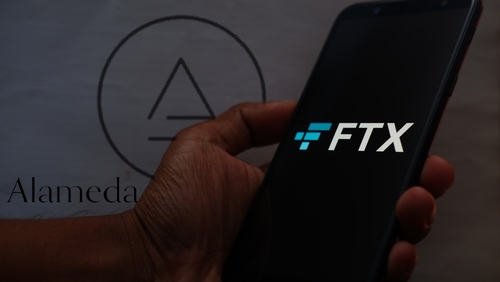It’s Time for the Law to Make that Explicit
“Noncompetitor criticism is essential speech. No one should be able to use trademark infringement lawsuits to silence criticism.”
Can you spot criticism? An environmental group calls out an oil company over emissions. A union calls out a corporation over labor practices. A human rights group calls out the prison system. Criticism—straightforward enough.
Some corporations, however, worry that some people won’t understand. They worry that consumers might think that the targeted corporations actually support the criticism. For example, consumers might think that Corporation X supports a labor union website that shows Corporation X’s logo and the phrase, “Corporation X must improve wages and working conditions!”
No corporation really thinks consumers are this dense, right? Well, decades of case law, up to today, suggest that some corporations will make these types of arguments to sue their critics. Alleging trademark infringement, corporations have argued that a consumer would be confused about the source, or endorsement of, the criticism—indeed, “[c]onfusion as to source is the bête noire of trademark law.” Jack Daniel’s Properties, Inc. v. VIP Prod. LLC, 599 U.S. 140, 147 (2023). But no corporation endorses or publishes self-criticism. These lawsuits are, and always have been, counter to explicit trademark law. They must stop.
This article will propose a solution, in the form of a test, for trademark infringement allegations against noncompetitor critics. I will (1) summarize two recent trademark cases, decided in the past several months, where corporations tried to silence critics; (2) propose a simple test for disposing of, and preventing, such cases; and (3) address potential counterarguments.
1. Too often, trademark infringement cases are used to silence critics.
Corporations abuse trademark law to silence noncompetitor critics. In two recent cases, corporations tried to silence union-related speech, which is “one of the most recognized First Amendment protections.” Crane v. Yurick, 287 F. Supp. 2d 553, 560 (D.N.J. 2003).



In both cases, confusion about the message was implausible. The unions had shown their disdain for company practices. And Trader Joe’s and Medieval Times’ respective claims, rightly, were dismissed. In fact, in Trader Joe’s, District Court Judge Vera pointed out that Trader Joe’s had come “dangerously close to the line of Rule 11,” Trader Joe’s Co., 2024 WL 305697, at *1, and, in late-April 2024, he granted Trader Joe’s United’s motion for attorneys’ fees. Trader Joe’s has also appealed the dismissal to the Third Circuit.
Trademark litigation abuse is longstanding, but these cases show that that abuse is also ongoing. These were sham litigations. The plaintiffs used their power to try to silence essential speech. Courts should fix this.
2. A new test: Is this criticism which I see before me?
Trademark law has long needed a clear test to address noncompetitor critics. Professor Hannibal Travis has chronicled trademark lawsuits “where none but the most grossly uninformed, imperceptive, or indifferent could be confused.” Hannibal Travis, The Battle for Mindshare: The Emerging Consensus That the First Amendment Protects Corporate Criticism and Parody on the Internet, 10 Va. J.L. & Tech. 3, 21 (2005). In 2005, he pointed out an emerging consensus that the First Amendment shielded what are known as “gripe sites”—websites established to criticize. Id. at 73. Recent case law supposedly confirms this, with a 2023 case noting, matter-of-factly, that no businessowner would “sponsor[] a site criticizing himself.” Johnson Auto. Sales, LLC v. Blair, No. 21-852, 2023 WL 2214116, at *5 (N.D. Ohio Feb. 24, 2023).
But Trader Joe’s and Medieval Times suggest that the law hasn’t come far enough. Powerful plaintiffs still bring preposterous trademark claims. Trademark law needs to spell out, in the most dumbed-down, easy-to-grasp language possible, that trademark claims against noncompetitor critics can’t possibly prevail.
Fortunately, longstanding trademark doctrine permits courts to tinker. The standard approaches across the various federal circuits include similar factors to analyze trademark infringement, like the strength of the plaintiff’s mark, evidence of actual confusion, and a defendant’s intent, among others. AMf Inc. v. Sleekcraft Boats, 599 F. 2d 341, 348–49 (9th Cir. 1979); Interpace Corp. v. Lapp, Inc., 721 F. 2d 460, 462–63 (3rd Cir. 1983). No single factor is determinative and courts may consider additional factors. Dreamwerks Prod. Grp., Inc. v. SKG Studio, 142 F.3d 1127, 1129 (9th Cir. 1998); A & H Sportswear, Inc. v. Victoria’s Secret Stores, Inc., 237 F.3d 198, 207 (3d Cir. 2000).
Keeping in mind this flexibility, here is my proposed test, in explicit language—just for fun—that I’d love to see a court use: “We don’t need to waste the Court’s or the parties’ time with the other factors. This case is easy if we consider just one additional factor to answer the basic question of consumer confusion: Would a consumer understand that the noncompetitor’s use is critical of the trademark holder? If yes, then there is no trademark infringement as a matter of law.”
That’s it. The test is that simple. In a perfect world, some court would paste this language into an opinion. Clear criticism obviates confusion.
3. Is my proposal too much? Not enough? Considering the counterarguments.
First, perhaps courts can’t dispose of trademark suits so blithely? Remember, though, that courts have discouraged “rigid weighing” of the factors, Dreamwerks, 142 F.3d at 1129 (cleaned up), and courts don’t require the factors be “followed precisely,” A & H Sportswear, Inc., 237 F.3d at 207. Also recall that the entire analysis boils down to a “basic question”: Would a consumer be confused? Synergistic Int’l Inc. v. Windshield Dr., Inc., No. 03-579, 2003 WL 21468568, at *3 (C.D. Cal. Apr. 28, 2003) (“This list of factors . . . assess[es] the basic question of likelihood of consumer confusion.”); Coty Inc. v. Excell Brands, LLC, 277 F. Supp. 3d 425, 452 (S.D.N.Y. 2017) (“[T]he basic question courts ask . . . : whether the defendant’s product confuses consumers.”).
My proposed test addresses that “basic question.” Although exceptions might exist, I think the weight of relevant cases suggests that a court can exercise this kind of discretion. I’ll even concede that a court might want to touch on the other factors before expounding the new test. Nevertheless, this approach comports with existing doctrine—courts routinely rely, significantly, on additional factors. Nike, Inc. v. Just Did It Enterprises, 6 F.3d 1225, 1228 (7th Cir. 1993) (“[P]arody is not an affirmative defense but an additional factor in the analysis.”). Multi Time Mach., Inc. v. Amazon.com, Inc., 804 F.3d 930, 936 (9th Cir. 2015) (“[W]e have found particularly important an additional factor that is outside of the eight-factor Sleekcraft test: ‘the labeling and appearance of the advertisements and the surrounding context on the screen displaying the results page.’”).
Second, maybe this test is unnecessary, given the dismissal of the claims in Trader Joe’s and Medieval Times? Current law did the job, so why worry? I worry because Trader Joe’s and Medieval Times thought they actually had a chance. Trademark law should make clear that plaintiffs like these have no chance. Current law isn’t explicit enough.
Think about the interests at play: “Much useful social and commercial discourse would be all but impossible if speakers were under threat of an infringement lawsuit every time they made reference to a person, company or product by using its trademark.” New Kids on the Block v. News Am. Pub., Inc., 971 F.2d 302, 307 (9th Cir. 1992). In fact, where a plaintiff tries “to extract a price for the exercise of . . . [their critics’] First Amendment rights,” Career Agents Network, Inc. v. Careeragentsnetwork.biz, 722 F. Supp. 2d 814, 822 (E.D. Mich. 2010) (awarding attorneys’ fees), I might even argue that courts should presumptively award attorneys’ fees, if I was in a more ambitious mood.
4. Can you spot criticism? Of course. Anyone can.
Noncompetitor criticism is essential speech. No one should be able to use trademark infringement lawsuits to silence criticism. I look forward to seeing a court—and with luck, many courts—sharpen trademark law to protect noncompetitor criticism.






